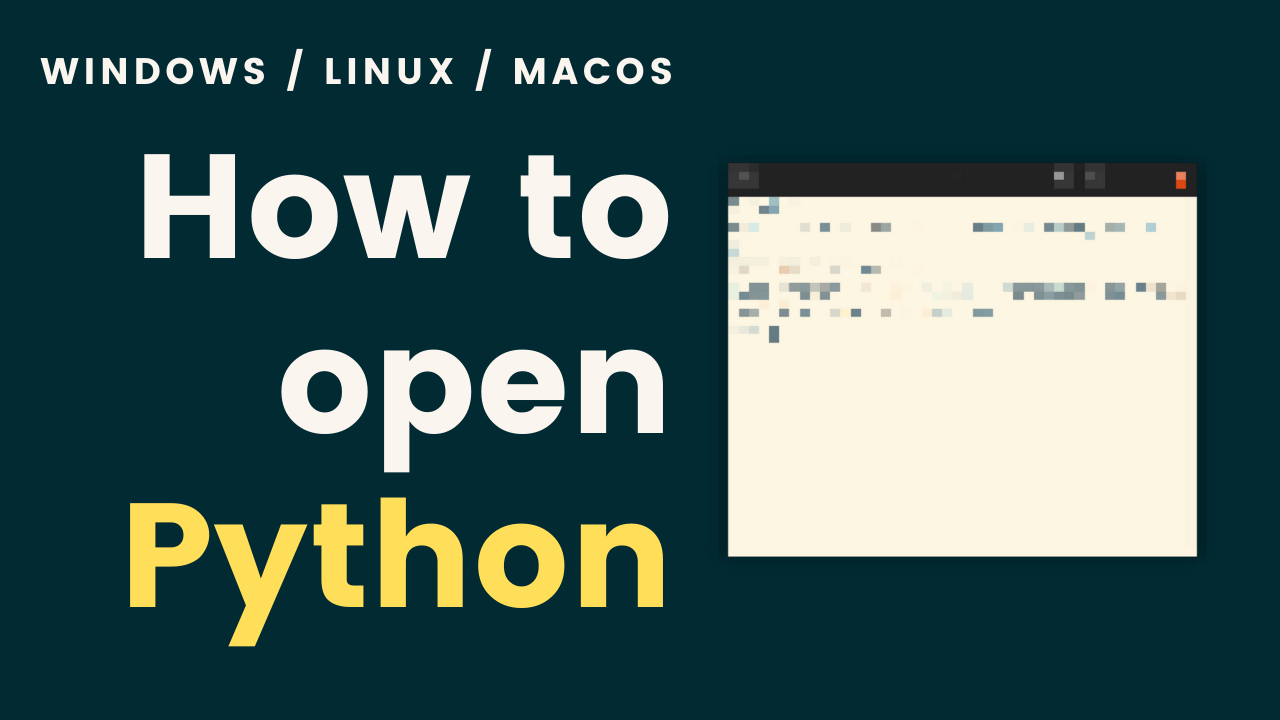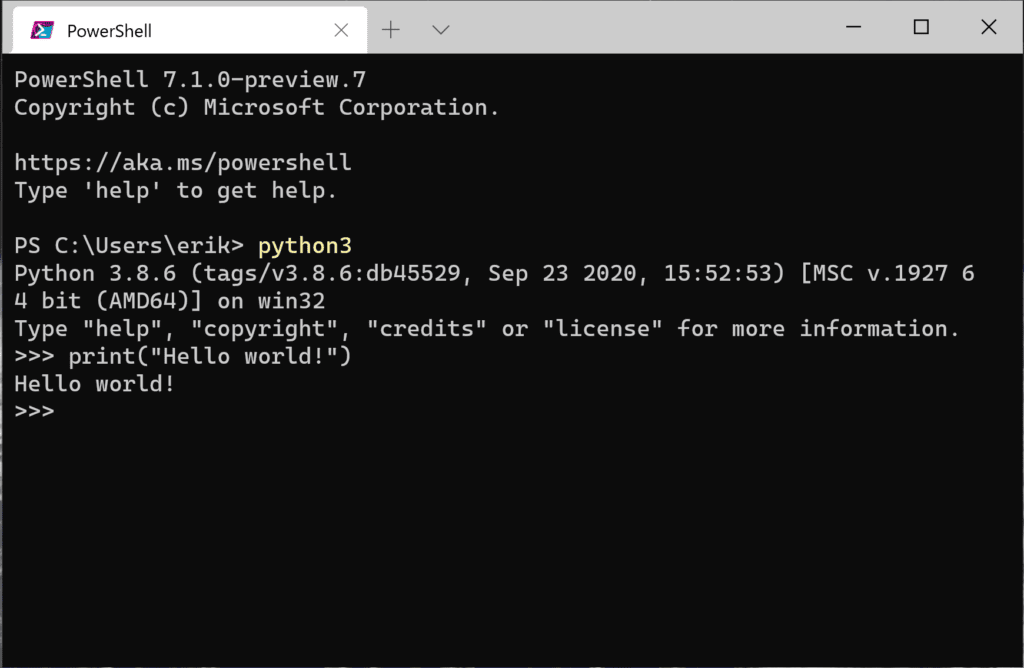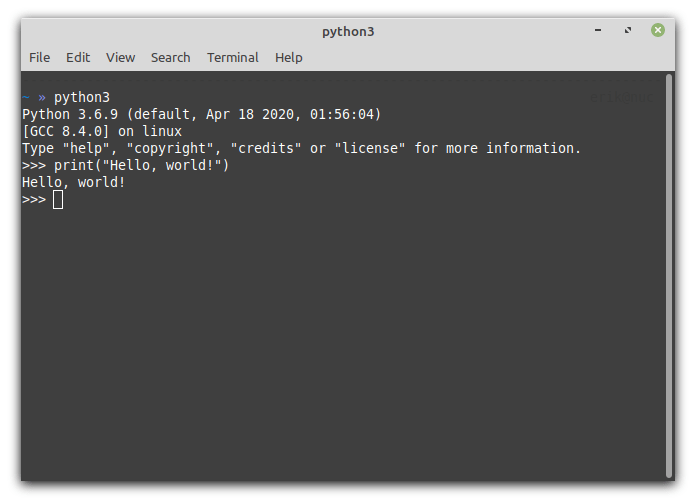How to start Python

With Python installed, let’s discover how to actually start it on your computer. First of all, you should know that there are two ways of using Python:
- Start an interactive shell called a REPL, short for Read-Evaluate-Print-Loop (more on this later).
- Start a Python program that you stored in one or more files with the .py extension.
In this course, we start with the interactive shell because it’s ideal for exploring the language. But at some point, using the REPL won’t cut it anymore, and you’ll have to start creating Python files. No worries, I’ll explain it all further on. But for now, we will focus on getting to know the language.
If you installed Python on your local machine, you first need to start a terminal or command prompt before you can start the Python interactive shell. On all platforms, you should be able to start Python 3 with the command python3, py (on Windows), or sometimes python. Just be sure you are running Python 3 and not 2, because some Linux and MacOS systems can have both versions installed. When starting Python, the first thing it does is print the version number, so it’s easy to check.
How to start Python on Windows
On Windows, you can start Python from a terminal. E.g., to start PowerShell simply hit the Windows key and start typing “PowerShell”. You can use the ‘Command Prompt’ program if you don’t have PowerShell. When in a shell or command prompt, enter one of the following commands (try them in the given order):
- py
python3- python
The first command (py) is a wrapper script that allows you to start the latest version of Python. If it works, great. Just remember that I’ll often refer to python or python3 in the course. You will need to use py in those cases.

How to start Python on a Mac
On MacOS, search for a program called terminal. You can do so by pressing the command key (⌘) + space bar. This will open up the Spotlight search bar, in which you start typing the word ‘terminal’.
Once you started the terminal, enter python3 to open the Python REPL. If that doesn’t work, try entering python instead (without the 3). Make sure to check if you started Python 3 though!
How to start Python on Linux
On Linux, you first need to start a terminal. This can often be done with the shortcut ctrl + alt + T. Alternatively, you can search for the terminal program in your menu. The name and where to find it differ from distribution to distribution. E.g., in KDE it’s called ‘Konsole’. Once you have a terminal running, simple enter python3 to start the Python REPL:

How to close the REPL
Now that you know how to open the REPL, it would be nice to properly close it too. If you simply close the terminal window, you will be able to close the REPL as well. However, it won’t be a clean exit and your terminal will usually warn you about that too. So how do you exit the REPL cleanly?
What works on every OS, is the following command: exit()
If you’re on Linux or MacOS, you can also use a little trick. By pressing control + d, the REPL will exit immediately. Control + d sends the ‘end of file’ character the to terminal, and the REPL interprets this as a request to exit Python. On Windows, you can do something similar by pressing control + z and then hitting enter.
